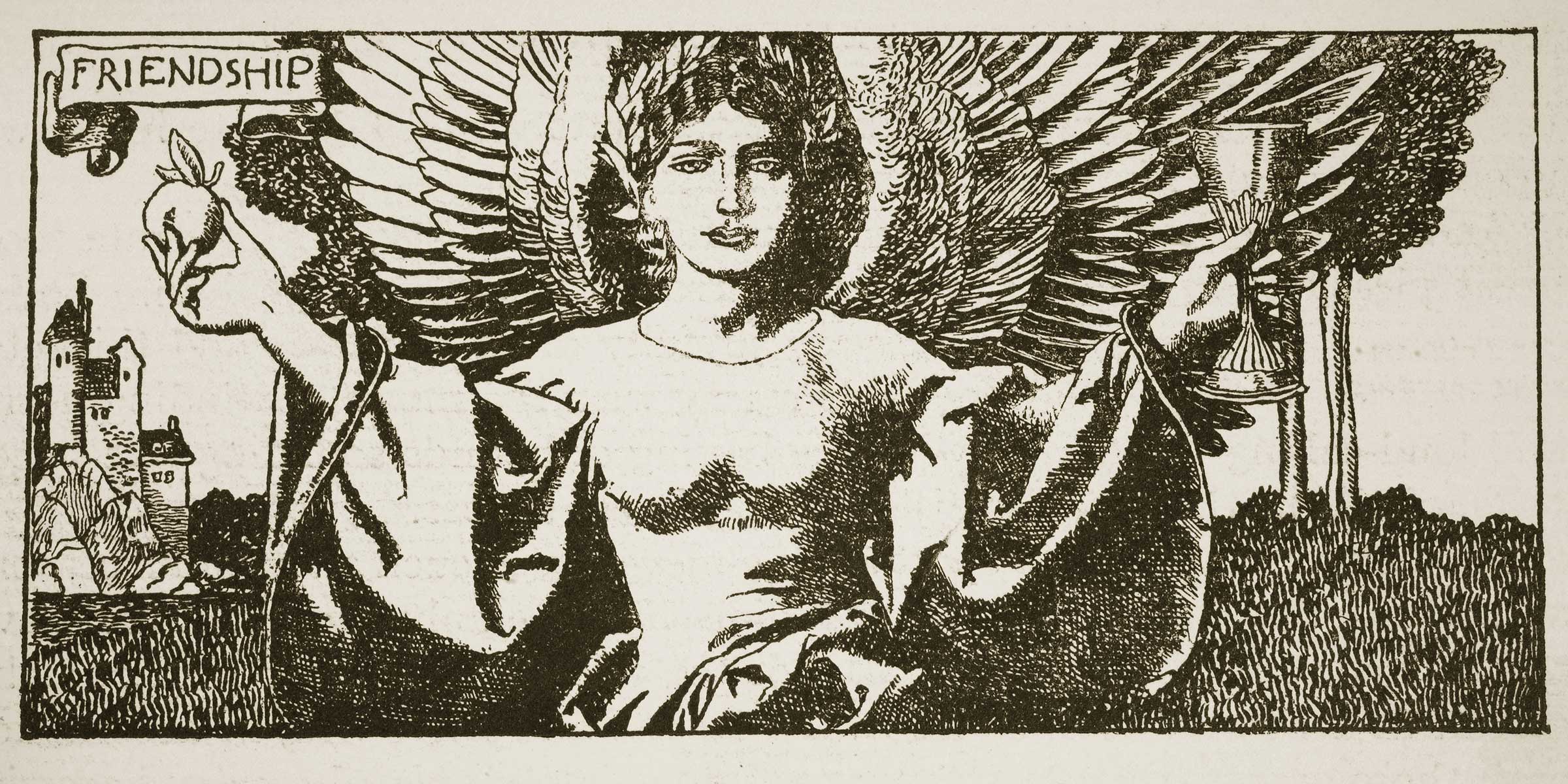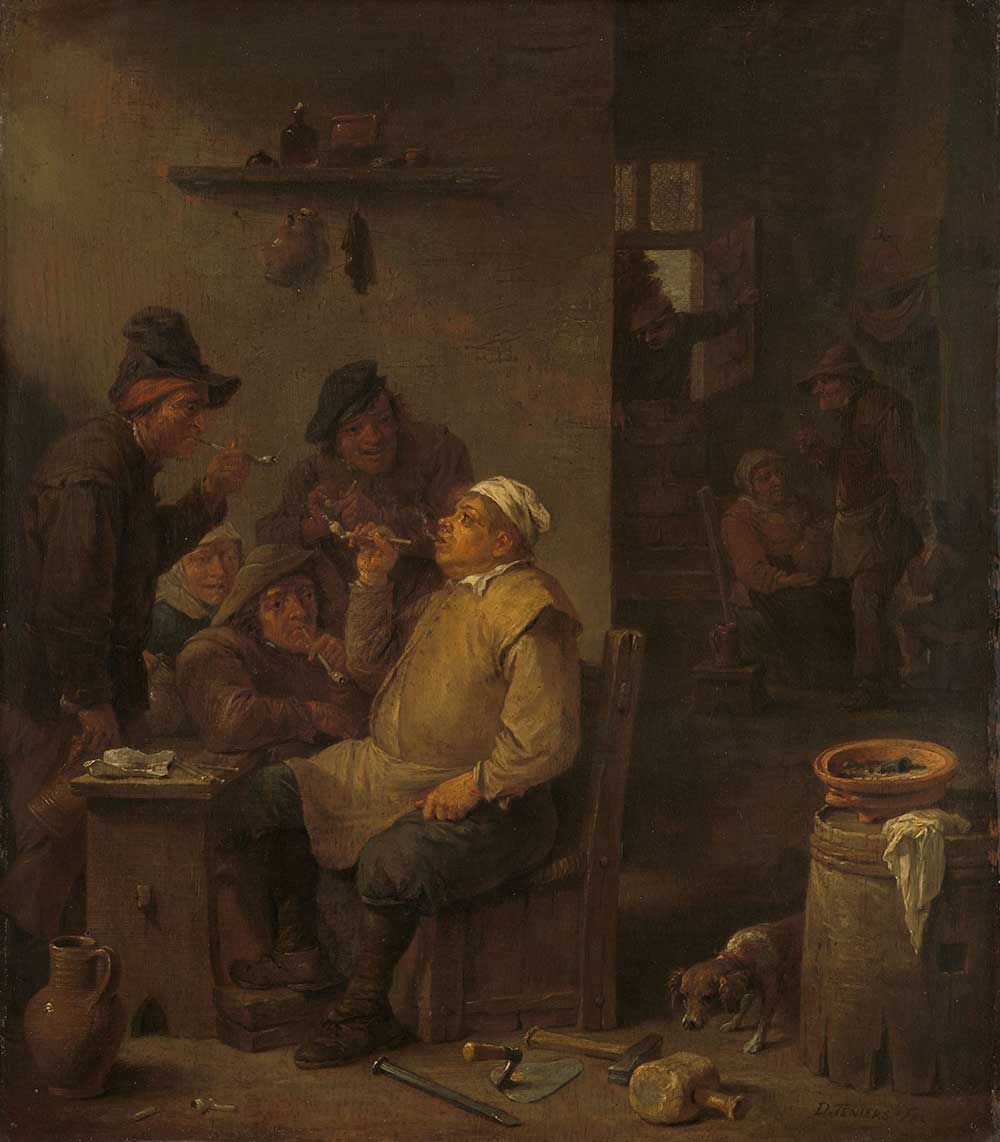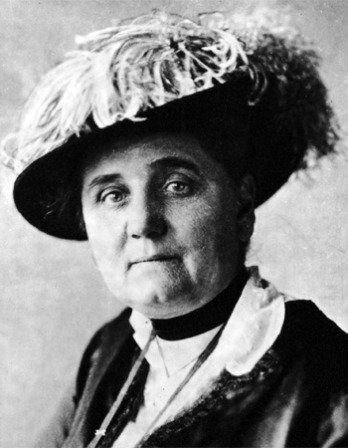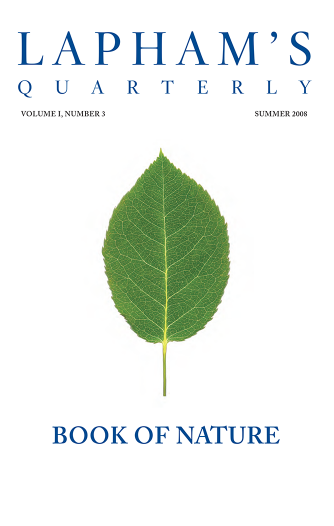A friend who is very near and dear may in time become as useless as a relative.
—George Ade, 1902
Summer, by Thomas Wilmer Dewing, c. 1890. Smithsonian American Art Museum, gift of William T. Evans.
For Austin, my friend.
Nick Carraway wants us to know: he despises Jay Gatsby. He introduces us to the man with the remark that Gatsby “represented everything for which I have an unaffected scorn.” In his last conversation with Gatsby, Nick tells him that he’s “worth the whole damn bunch put together” but then adds to us: “I disapproved of him from beginning to end.” What lies between these disavowals is the book: a story of Nick’s fascination with, and indeed admiration for, Gatsby, beginning when Nick fortuitously moves in next door and culminating with Gatsby’s murder over a crime he did not commit.
Are Nick and Gatsby friends? In Baz Luhrmann’s 2013 film adaptation, which removes much of Nick’s contempt for Gatsby, the question is posed in the first few minutes. “Was he a friend of yours?” a doctor asks Nick, washed up in a sanitarium. Nick does not answer the question, instead replying, “He was the single most hopeful person I have ever met…He was like one of those machines that register earthquakes ten thousand miles away.” This is as much of an answer as he’ll ever give. Even here, the central mystery of Gatsby is not Gatsby himself but this question of what his relationship with Nick is, or could be, or should be. Nick can’t answer the question; he doesn’t know the answer. And though Nick is the narrator of Gatsby’s story, it is an open question whether or not he understands it, even as he asserts his own superiority over Gatsby’s interior life, claiming the right not only to interpret Gatsby’s attachments but to disdain them.
Key to The Great Gatsby’s charm is its use of a New York summer as a device that slows everything to a crawl while making people dangerously impulsive. Everything has passed peak ripeness without yet becoming rotten. Summer is drugged stillness and an unstable equilibrium. It is the season in which whatever is going on cannot last and will go on forever.
Whether or not Nick and Gatsby are friends, friendship’s natural season is summer. Every year reinforces the gap between the season’s ideal (beach fun, sundresses, unbounded time) and summer’s reality (mosquitoes, sweat, misery). Friendship, too, partakes of this sort of gap, though in its case the gap is not so much between ideal and reality but between its overt representations and its fictional depictions. At the moment, friendship, particularly among women, is feted—friendship is “in,” even—as a positive, necessary part of life, as more important than romantic love, and, often, as a culturally undervalued institution around which there are “no scripts” or recognition for its highs and lows.
But when dramatized, friendship often becomes retrospective: it’s about the friends you left behind, whether because of a falling-out or a death. These are friends of childhood and school days. These are relationships that are mourned, but that are also escaped. Rather than being a necessary part of life, friendship is a dangerous alternative to normal living—a kind of world of lotus-eaters, dwelling forever in the summer space between childhood and adulthood. To flirt with the intensity of these friendships as an adult invites trouble, the same way that when our schooling is over, summer can no longer be treated as an extended vacation.
Which is very strange, because, after all, what could be easier than friendship? In theory, nothing. Friendship partakes neither of sex’s private fears and needs nor of the forward-looking speculation inherent in coupledom. Questions of commitment, children, shared finances—these are unimportant. It is a relationship that consists almost entirely in shared history, loyalty, and an ongoing pleasure in each other’s company. Friendship asks only that you be yourself. In philosophical treatments of friendship, it can often be elevated to the highest form of human relationships, even if its perfect form is rare. In The Metaphysics of Morals, Immanuel Kant compares the true friend to a black swan: something that “actually exists here and there” but which you don’t see every day, or perhaps ever in your lifetime. It’s a very different story, however, when we cast an eye toward fiction. If romantic love has the marriage plot, the friendship plot is summed up by Langston Hughes in “Poem”:
I loved my friend.
He went away from me.
There’s nothing more to say.
The poem ends,
Soft as it began—
I loved my friend.
Not every story with a marriage in it is a marriage plot, and not every story with friends is a friendship plot. When friendship exists in the background, it’s unremarkable but generally uncomplicated. But when friendship becomes the plot, then the only story to tell is about how the friendship ended.
In both children’s literature and in stories for adults, friendship repeatedly emerges as something oppressively close, exclusive of others, jealous of growth; friendship stories are about rifts and endings, drawing a final curtain over the lost past. Leafing through classic books of childhood and adolescence, I find that many turn out to be absolutely obsessed with death and loss: A Separate Peace, Bridge to Terabithia, Old Yeller, and The Secret History, to name a few. Some of these stories make the end of friendship a straightforward plotline, but when these stories are narrated by the surviving friend, they communicate an affection and fascination that isn’t always kind, and can even be cruel. The absent friend, by virtue of not making it out of childhood, is always both superior and inferior, an image of unrealized potential that could always have triumphed. Even telling the story can be a way of declaring the friendship over, committing the one betrayal your friend could not forgive.
Or perhaps you’re chasing them. In Elena Ferrante’s My Brilliant Friend, narrator Lenù begins to write the story of her friendship with the disappeared Lila almost spitefully and highlights throughout the ways in which their friendship consisted in jockeying for the upper hand: “We’ll see who wins this time, I said to myself. I turned on the computer and began to write—all the details of our story, everything that still remained in my memory.” Does Lenù like Lila? The second of the four Neapolitan Novels has her taking the papers Lila had given her to keep and dumping them into a river, imagining, as she does so, that it is Lila herself falling into the water.
If you wanted to blame something for this state of affairs, you could find a likely culprit in marriage, which has steadily become an institution that is expected to combine an economic and sexual relationship with one of mutual respect, esteem, and, yes, friendship. As with many things, the distinction between older cultural expectations of marriage and newer ones can be overstated; many examples of a marriage that we’d consider modern pop up in even the most ancient literature, with Penelope and Odysseus providing perhaps the most obvious example. But the love plot, as we know it, is not the preeminent concern of a text like the Odyssey.
By the time the novel came along, however, love stories were becoming not just the main but the only concern. “If you think of a novel in the vague you think of a love interest—of a man and woman who want to be united and perhaps succeed,” said E.M. Forster in Aspects of the Novel (1927). “If you think of your own life in the vague, or of a group of lives, you are left with a very different and a more complex impression…Love, like death, is congenial to a novelist because it ends a book conveniently.” Forster points to marriage as a way of making love seem permanent: it can provide a closing flourish by promising stability.
In his 1886 novel The Bostonians, Henry James dramatizes the conflict between friendship and marriage by turning both relationships into struggles for ownership. James depicts the “rescue” of a woman named Verena from a close, toxic, quasi-lesbian friendship with a suffragette—quite literally “wrenched…away” by Verena’s soon-to-be husband in the novel’s final paragraph—though James does not portray her marriage as likely to be much happier, noting that Verena “was in tears. It is to be feared that with the union, so far from brilliant, into which she was about to enter, these were not the last she was destined to shed.” Friendship does not come out of The Bostonians looking particularly utopian, but marriage certainly does not either.
As The Bostonians indicates, some of the anxieties around friendship have to do not so much with friendship per se but rather what it stands for, or can stand for, in fiction—that is, lesbian and gay relationships, and thus the chance of building lives that simply preclude heterosexual marriage and everything it entails. In the 1994 film Heavenly Creatures, Peter Jackson’s portrayal of the ultimately homicidal friendship of Pauline Parker and Juliet Hulme in the 1950s, a doctor informs one girl’s mother of the dangers of “homosexuality” in a scene of comically overstated horror. “It can strike at any time,” he warns her. Later, he promises, “Chances are she’ll grow out of it. If not…well, medical science is progressing in leaps and bounds. There could be a breakthrough at any time!” The girls, meanwhile, channel their affections toward celebrated tenor Mario Lanza, but whether he is a substitute for a man or for each other (or both) is left open-ended.

Friendship, detail of an illustration from The Story of the Champions of the Round Table, by Howard Pyle, 1905. The Stapleton Collection / Art Resource, NY.
Still, where friendship operates as a code, it is still present as text. These stories are still “about” friendship, after all, and so friendship steadily accrues these myths along with whatever it’s meant to insinuate. And because friendship begins to seem like an off road into an alternate adulthood—or no adulthood at all—the friendship plot’s most congenial home is children’s literature, followed by books that concern themselves with childhood. Read through the lens of the friendship plot, many books that either are childhood classics or focus on childhood reveal themselves as stories that portray the end of childhood and initiation into adulthood as the death or abandonment of a beloved friend.
Sometimes this friend isn’t human. A.A. Milne’s Winnie-the-Pooh stories end with the disappearance of Christopher Robin, The Velveteen Rabbit with the rabbit and his boy parting ways after the boy almost dies of scarlet fever and his childhood is—quite literally—consumed by flame. In Old Yeller adulthood is taken up in its bitterest sense: the boy knows that his dog must be killed by his own hand, through no fault of the dog’s, to spare that dog a much worse and more painful death from rabies.
Perhaps the most notorious (and beloved) example of the dead-friend book is Katherine Paterson’s 1977 novel Bridge to Terabithia. In it two lonely children, Leslie and Jess, meet each other, and despite the obstacles to their friendship—she’s wealthy, and he’s poor; she’s a tomboy, and he’s a boy who wants to be an artist—they become best friends, creating a private world in which these differences disappear. This brief, intense friendship ends when one day Jess goes on an unexpected trip to an art museum with a teacher. But he neglects to tell Leslie, who tries to visit their imagined world of Terabithia, as planned, and drowns. Unable to accept her death, Jess destroys the art supplies she had given him.
But he can’t undo what happened by trying to cut off his own path toward the future. Instead, slowly, Jess learns to accept Leslie’s death:
It was Leslie who had taken him from the cow pasture into Terabithia and turned him into a king. He had thought that was it. Wasn’t king the best you could be? Now it occurred to him that perhaps Terabithia was like a castle where you came to be knighted. After you stayed for a while and grew strong, you had to move on…Now it was time for him to move out. She wasn’t there, so he must go for both of them. It was up to him to pay back to the world in beauty and caring what Leslie had loaned him in vision and strength.
Implicit in Jess’ realization is that perhaps if Leslie had remained alive, he would not have understood he was strong enough to move on. Leslie dies the moment Jess no longer requires her in order to pursue an adult life. He will now grow up, marked by loss, the door to childhood firmly closed. Leslie’s parents give Jess their dead daughter’s books and art supplies, negating his attempted sacrifice. He inducts his younger sibling into Terabithia, understanding that it is now her turn. But—rather like those necessary-at-the-time bits of the rocket that get jettisoned into space—friendship has to be discarded in order to perform its function. As long as Leslie had remained alive, he would have stayed in the no place and no time of Terabithia.
These stories of adolescence and the end of friendship do not come from nowhere. When you are younger, your friends are your present and your imagined future. When you and your friends begin to develop into different people, it’s painful. Not everyone is lucky enough to have the kinds of friendships that have stayed firm simply through knowing one another for decades and staying nearby, as opposed to the mixture of genuine affection, interest sharing, and professional advancement that characterizes many adult friendships. For many these early friendships end in painful rifts and silence. All the great dramas of my own adolescence were friendships. It seemed unlikely then that romance had any intimacy or pain that could compare. It still does.
Part of the task of children’s literature is introducing children to the inevitability of death by depicting the death of toys, the death of the dog, or the death of a friend or a family member. Not every child makes it out of childhood. Our progression in life is inevitably going to be marked by losses. Bridge to Terabithia, inspired by a real loss, still makes me cry. If I resent these stories, it is in part because no “use” of our grief is truly satisfying, because I hate making loss natural, even when it is. In the aggregate, it’s hard not to ask: Why lose the friend? The dog? Why make a necessity out of these losses at all? Is it simply because we know that they must happen?
In Love and Death in the American Novel (1960), Leslie Fiedler characterizes American literature as full of “books that turn from society to nature or nightmare out of a desperate need to avoid the facts of wooing, marriage, and childbearing.” That is, these are books about men fleeing women, whether it be in Huckleberry Finn or Moby Dick. Placed alongside these we can add stories, not strictly American, about girls deliberately choosing not to leave their adolescence—maybe most hauntingly in Peter Weir’s 1975 film Picnic at Hanging Rock (an adaptation of Joan Lindsay’s novel of the same name), in which a group of schoolgirls simply vanish with no explanation. In all these stories, adulthood is refused by retreating into some alternative arrangement.
These stories exist in continuity with the friendship plot, but unlike with friendship, their narratives end in a blank rather than the dissolution of a single relationship. As Ishmael tells us, he takes to the sea when life on land simply becomes unbearable. The pleasures of the sea partly consist in its establishment of real but purely temporary relationships, centered entirely upon achieving particular goals. It is a society designed to be escaped, even though the world of the Pequod eventually disappears under “the great shroud of the sea” rolling over the wreckage of Ishmael’s onetime companions. In Picnic at Hanging Rock, even a temporary alternate arrangement is not conceivable for the girls: they are already trapped in a single-sex world and facing an adulthood and sexual future in which their lives promise only to become smaller. Hence the solution to their dilemma is, without overstatement, to create a rift in the natural world and disappear through it.

Mason Smoking with Companions in a Tavern, by David Teniers the Younger, c. 1675. Rijksmuseum.
If the friendship plot is backward looking and death loving, it may be not only because friendship embodies the alternative to traditional adulthood but also because friendship itself doesn’t really believe in time. Romantic love comes with stakes, obstacles, and progress, and the beats of plots are built around the idea of those struggles as what is normal and naturally interesting. A friendship is not a static relationship, but it is also not a linear one. Friendships can be picked up after decades without their having suffered, and they can matter intensely, even be life changing, while lasting only a few months. Much like with family, a friendship can encompass feelings of dislike and sometimes hatred without necessarily undoing the relationship itself. How do you tell a story about a relationship that remains, at heart, stable and that has no endpoint toward which to go?
One answer is simply that you don’t. Stories that try to focus on friendship while resisting the lure of the friendship plot often end up markedly plotless, instead describing two friends spending a day together. Mike Leigh’s 1997 film Career Girls shows two old friends reuniting after six years. The only things at stake are whether or not it’s been too long since they last met and whether or not one friend is judging the other a sort of secret loser. By the end, however, it’s clear that their friendship survives whether they see each other next month, next year, or never again. “Strongly plotted films establish a goal and reach it, and we can go home under the impression that something has been accomplished,” Roger Ebert noted in his review of Career Girls. “Mike Leigh’s films realize that for most people, most days, life consists of the routine of earning a living, broken by fleeting thoughts of where our efforts will someday take us—financially, romantically, spiritually, or even geographically. We never arrive in most of those places, but the mental images are what keep us trying.” But friendship does not need us to arrive anywhere; in friendship, you are always already there.
And yet I can’t help wanting more for friendship—can’t help wanting a friendship plot that is not looking backward, saying goodbye, burying bodies, shooting the dog. Alongside all these stories about the childhood friend who never made it, alongside these plotless explorations of days, I want more. I want plots for friendship that involve friends daring all for each other, choosing each other, sacrificing for each other, living alongside and with each other. Maybe friendship’s subversiveness lies in its summer-day quality, its infinite extension, its refusal to wed itself to institutions. But I want love itself to be the story, rather than its beginning or its end. Surely, there’s a story in that. And, actually, there is.
Hans Christian Andersen’s 1844 fairy tale “The Snow Queen” is, like so many of the texts discussed here, a story about a lost friend. Little Kay and Gerda are best friends until Kay falls under a curse that freezes his heart, and he is whisked away by the Snow Queen. Gerda sets out after him. Along the way she falls in with different groups of people, not all of whom wish her well. (One old woman tries to enchant Gerda so that the girl will stay with her forever.) But Gerda eventually finds Kay, who is now “quite blue, yes, nearly black with cold” and his heart “a lump of ice,” trying but failing to spell the word eternity, which would give him his freedom if he could succeed. Gerda’s tears restore Kay to himself, and the two return to their old lives to find themselves adults in a world of summer.
One’s friends are that part of the human race with which one can be human.
—George Santayana, 1914“The Snow Queen” isn’t free of its own sentimentality about childhood. In its closing lines, Andersen describes Kay and Gerda as “grown-up, and yet children; children at least in heart; and it was summertime; summer, glorious summer!” But if the normal progression toward adulthood in fiction is about becoming morally compromised, spiteful, and cold, Kay and Gerda (mostly Gerda) manage to grow up by being loyal, brave, and generous. Instead of becoming adults through relinquishing eternity, they become adults by gaining it. Nor do Kay and Gerda end the story as lovers; instead they remain friends.
The traditional friendship plot may dominate, and I certainly would not wish for it to be gone or even diminished. But maybe the loss of our friends is a compelling story precisely because it’s not inevitable: things could always happen differently, maybe in ways that are a little worse, maybe in ways that are a little better. And maybe every once in a while, things happen in just precisely the right way, and the friend stays, and it is, impossibly, an eternal summer.




